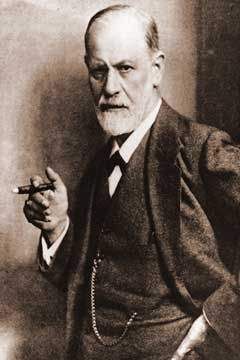Ознакомительная версия.
Nadelson, C. C.; Notman, M. T; Miller, J. В.: and Zilbach. J. (1982). Aggression in women: Conceptual issues and clinical implications. In Aggression, adaptations, andpsychotherapy. Vol. 3 of The woman patient, ed. M. T. Notman and С. С. Nadelson. New York: Plenum, pp. 17-28.
Nagera, H. (1966). Early childhood disturbances, the infantile neurosis, and the adulthood disturbances. New York: Int. Univ. Press.
Nagera, H. (1969). Imaginary companion: Its significance for ego development. Psychoanal. Study Child, 24:165-196.
Nagera, H. (1975). Female sexuality and the Oedipus complex. New York: Aronson.
Neubauer, P. B. (I960). The one – parent child and his oedipal development. Psychoanal. Study Child, 15:286-309.
Neubauer, P. B. (1980). The role of insight in psychoanalysis. In Psychoanalytic explorations of technique, ed, H. P. Blum. New York: Int. Univ. Press, pp. 29-40.
Neubauer, P. B. (1984). Anna Freud's concept of developmental lines. Psycho-anal. Study Child, 39:15-27.
Neugarten, B. (1979). Time, age, and the life cycle. Amer. J. Psychwt., 136:887-894.
Novick, J., and Novick, К. К. (1972). Beating fantasies in children. Int. J. Psychoanal., 53:237-242.
Novick, J., and Novick, К. К. (1990). Some comments on masochism and the delusion of omnipotence from a developmental perspective.y. Amer. Psychoanal. Assn., in press.
Novick, К. К., and Novick, J. (1987). The essence of masochism. Psychoanal. Study Child, 42:353-384.
Noy, P. (1969). A revision of the psychoanalytic theory of the primary process. Int. J. Psychoanal., 50:155-178.
Noy, P. (1973). Symbolism and mental representation. Ann. Psychoanal., 1:125-158.
Noy, P. (1978). Insight and creativity. Amer. Psychoanal. Assn., 26:717-748.
Noy, P. (1979). The psychoanalytic theory of cognitive development. Psycho-anal. Study Child, 34:169-216.
Noy, P. (1982). A revision of the psychoanalytic theory of affect. Ann. Psychoanal., 10:139-186.
Nunberg, H. (1931). The synthetic function of the ego. Int. J. Psychoanal., 12:123-140.
Nunberg, H. (1932). Principles of psychoanalysis: Their application to the neuroses. New York: Int. Univ. Press, 1955.
Offer, D. (1969). Adolescent turmoil. In The psychological world of the teen-ager: A study of normal adolescent boys. New York: Basic Books, pp. 174-192.
Ogden, Т. Н. (1987). The transitional oedipal relationship in female development. Int. J. Psychoanal., 68:485-498.
Olden, C. (1953). On adult empathy with children. Psychoanal. Study Child, 8:111-126.
Oster, H. (1978). Facial expression and affect development. In The development of affect, ed. M. Lewis and L. A. Rosenblum. New York: Plenum, pp. 43-75.
Papousek, H., and Papousek, M. (1979). The infant's fundamental adaptive responsive system in social interaction. In Origins of the infant's social respon – slveness, ed. E. Thoman. Hilisdale, N.J.: Eribaum, pp. 27-32.
Papousek, H., and Papousek, M. (1981). How human is the human newborn, and what else is to be done? In Prospective issues in infancy research, ed. K. Bloom. Hilisdale, N.J.: Eribaum, pp. 137-155.
Papousek, H., and Papousek, M. (1984). The evolution of parent – infant attachment: New psychobiological perspectives. In Frontiers of infant psychiat-n. Vol. 2, ed. J. Call, E. Galenson, and R. L. Tyson. New York: Basic Books, pp. 276-283.
Parens, H. (1979). The development of aggression in early childhood. New York: Aronson.
Parens, H.; Pollock, L; Stern, J.; and Krarner, S. (1976). On the girls entry into the Oedipus complex. J. Amer. Psychoanal. Assn., 24:79-107.
Pedersen, F. A., and Robson, K. S, (1969). Father participation in infancy. Amer. J. Orthopsychiat., 39:466-472.
Peller, L. E. (1954). Libidinal phases, ego development and play. Psychoanal. Study Child, 9:178-198.
Peller, L. E. (1956). The school's role in promoting sublimation. Psychoanal. Study Child, 11:437-449.
Peller, L. E. (1958). Reading and daydreams in latency: Boy-girl differences. Amer. Psychoanal. Assn., 6:57-70. Person, E. S. (1983). The influence of values in psychoanalysis: The case of female psychology. Psychiatry Update, 2:36-50.
Person, E. S. (1986). Male sexuality and power. Psychoanal. Inq., 6:3-25.
Person, E. S. (1988). Dreams of love and fateful encounters. New York: Norton.
Peterfreund, E. (1971). Information, systems, and psychoanalysis: An evolutionary biological approach to psychoanalytic theory. Psychological Issues, Monograph 25/26. New York: Int. Univ. Press.
Peterfreund, E. (1978). Some critical comments on psychoanalytic conceptions of infancy. Int. J. Psychoanal., 59:427-441.
Petersen, A. C. (1979). Female to pubertal development. In Female adolescent development, ed. M. Sugar. New York: Brunner/Mazel, pp. 23-46.
Реto, А. (1967). Terrifying eyes. Psychoanal. Study Child, 24:197-212.
Piaget, J. (1932). Moral judgment: Children invent the social contract. In The essential Piaget: An interpretive reference and guide, ed. H. E. Gruber and J. Voncche. New York: Basic Books, 1977, pp. 159-193.
Piaget, J. (1936). The origins of intelligence in children. New York: Norton, 1963.
Piaget, J. (1937). The construction of reality in the child. New York: Basic Books, 1954.
Piaget, J. (1946). Play, dreams and imitation in childhood. New York: Norton, 1962.
Piaget, J. (1952). The child's conception of number. New York: Humanities.
Piaget, J. (1954). Intelligence and affectivity: Their relationship during child development. Palo Alto, Calif.: Annual Reviews, 1981.
Piaget, J. (1958). Equilibration processes in the psychobiological development of the child. In The essential Piaget, ed. H. E. Gruber and J.J. Voneche. New York: Basic Books, 1977, pp. 832-841.
Piaget, J. (1964). Six psychological studies. New York: Random House, 1967.
Piaget, J. (1967). Biology and knowledge. Chicago: Univ. of Chicago Press. 1972.
Piaget, J., and Inhelder, B. (1969). The psychology of the child. New York: Basic Books.
Piers, G., and Singer, M. B. (1953). Shame and guilt. Springfield.
Thomas. Pine, F. (1971). On the separation process: Universal trends and individual differences. In Separation – individuation: Essays in honor of Margaret S. Mahler, ed. J. B. McDevitt and C. Settlage. New York: Int. Univ. Press, pp. 113-130.
Pine, F. (1974). Libidinal object constancy: A theoretical note. Psychoanal. Contemp. Science, 3:307-313.
Pine, F. (1985). Developmental theory and clinical process. New Haven: Yale Univ. Press.
Plant, E. A. (1979). Play and adaptation. Psychoanal. StudyChild, 34:217-234.
Plant, E. A., and Hutchinson, F. (1986). The role of puberty in female psycho-sexual development. Int. Rev. Psychoanal., 13:417-432.
Pollock, G. H. (1981). Aging and aged: Development on pathology. In The course of life. Vol. 3, ed. S. 1.
Greenspan and G. H. Pollock. Publication No. (ADM) 81-1000. Washington, D. C.: DHHS, pp. 549-581. Prechtl, H. F. R. (1982). Assessment methods for the newborn infant: A critical evaluation. In Psychobiology of the human newborn, ed. P. Stratton. New York: Wiley, pp. 21-52.
Provence, S., and Lipton, R. C. (1962). Infants in institutions. New York: Int. Univ. Press.
Pruett, K. D. (1983). Infants of primary nurturing fathers. Psychoanal. Study Child, 38:258-280.
Pruett, K. D. (1984). Children of the father-mothers. In Frontiers of infant psychiatry. Vol. 2, ed. J. D. Call, E. Galenson, and R. L. Tyson. New York: Basic Books, pp. 375-380.
Pruett, K. D. (1985). Oedipal configurations in young father-raised children. Psychoanal. Study Child, 40:435-456.
Pruett, K, D. (1987). Nurturingfather.-Journeytowardtheconpleteman. New York: Warner.
Pulver, S. E. (1970). Narcissism: The term and the concept. Amer. Psychoanal. Assn., 18:319-341.
Pulver, S. E. (1974). Unconscious versus potential affects. Psychoanal. Q., 43:77-84.
Rakic, P., and Yakovicv, P. 1. (1968). Development of the corpus callosurn and cavum septi in man.y. Сотр. Neural., 132:45-72.
Rangell, L. (1963). Structural problems in intrapsychic conflict. Psychoanal. Study Child, 18:103-138.
Rangell, L. (1968), A further attempt to resolve the «problem ofanxiety.» Amer. Psychoanal. Assn., 16:371-404.
Rangell, L. (1972). Aggression, Oedipus, and historical perspective. Int. J. Psychoanal., 53:3-11.
Rangell, L. (1974). A psychoanalytic perspective leading currently to the syndrome of the compromise of integrity. Int. J. Psychoanal., 55:3-12.
Rangell, L. (1980). The mind of Watergate: An exploration of the compromise of integnty. New York: Norton.
Rangell, L. (1982). The self in psychoanalytic theory. Amer. Psychoanal. Assn., 30:863-891.
Rapaport, D. (1951). Toward a theory of thinking. In Organization and pathology of thought, ed. D. Rapaport. New York: Columbia Univ. Press, pp. 689-730.
Rapaport, D. (1953). On the psycho-analytic theory of affects. In The collected papers of David Rapaport, ed. M. M. Gill. New York: Basic Books, 1967, pp. 476-512.
Rapaport, D. (1960). Psychoanalysis as a developmental psychology. In The collected papers of David Rapaport, ed. M. M. Gill. New York: Basic Books, 1967, pp. 820-852.
Rapaport, D., and Gill, M. M. (1959). The points of view and assumptions of metapsychology. In The collected papers of David Rapaport, ed. M. M. Gill. New York: Basic Books, 1967, pp. 795-811.
Reeves, J. W. (1965). Thinking about thinking. New York: George Braziller. Reich, A. (1953). Narcissistic object choice in women. I. Amer. Psychoanal. Assn., 1:22-44.
Reich, A. (1954). Early identifications as archaic elements in the superego. Amer. Psychoanal. Assn., 2:218-238.
Reich, A. (1958). A character formation representing the integration of unusual conflict solutions into the ego structure. Psychoanal. Study Child, 13:309-323.
Reich, A. (1960), Pathologic forms of self – esteem regulation. Psychoanal. Stud. Child, 15:215-232.
Renik, O. (1972). Cognitive ego function in the phobic symptom. Psychoanal. Q., 41:537-555.
Rheingold, H. L. (1969). The social and socializing infant. In Handbook of socialization theory and research, ed. D. Goslin. Chicago: Rand McNally, pp. 779-790.
Riess, A. (1978). The mother's eye: For better and for worse. Psychoanal. Study. Child, 33:381-409.
Ritvo, S. (1974). Current status of the concept of infantile neurosis. Psychoanal. Study Child, 29:159-188.
Ritvo, S. (1976). Adolescent to woman. Amer. Psychoanal. Assn., 24: 127-138.
Ritvo, S. (1981). Anxiety, symptom formation and ego autonomy. Psychoanal. Study Child, 36:339-364.
Ritvo, S., and Solnit, A.J. (1960). The relationship of early ego identification to superego formation. Int. J. Psychoanal., 41:295-300.
Roiphe, H., and Galenson, E. (1981). Infantile origins of sexual identity. New York: Int. Univ. Press.
Rosenblatt, A. D. ( 1985). The role of affect in cognitive psychology and psychoanalysis. Psychoanal. Psychot., 2:85-97.
Rosenblatt, A. D., and Thickstun.J. T. (1977). Modern psychoanalytic concepts ofgeneral psychology; Part 2: Motivation. Psychological Issues, Monograph 42/43. New York: Int. Univ. Press.
Rosner, H. (1972). «Of music, magic, and mystery»: Studies in adolescentsynthesis. Amer. Psychoanal. Assn., 20:395-416.
Ross, J. M. (1975). The development of paternal identity: A critical review of the literature on nurturance and generativity in boys and men. Amer. Psychoanal. Assn., 23:783-818.
Ross, J. M. (1982a). From other to father: The boy's search for a generative identity and the oedipal era. In Father and child: Developmental and clinical perspectives, ed. S. H. Cath, A. R. Gurwitt, andJ. M. Ross. Boston: Little, Brown, pp. 198-203.
Ross, J. M. (1982b). Oedipus revisited: Laius and the «Laius Complex.» Psychoanal. Study Child, 37:169-200.
Rothstein, A. (1980). The narcissistic pursuit of perfection. New York: Int. Univ. Press.
Rothstein, A. (1983). The structural hypothesis: An evolutionary perspective. New York: Int. Univ. Press.
Rothstein, A. (1988). The representational world as a substructure of the ego. J. Amcr. Psychoanal. Assn., 36:191-208.
Ryeroft, C. (1956). Symbolism and its relationship to the primary and secondary process. Int. J. Psychoanal., 37:137-146.
Ryeroft, C. (1968). Imagination and reality: Psycho-analytical essays, 1951 – 1961. London: Hogarth.
Sachs, H. (1929). One motive factor in formation of super-ego in women. Int. J. Psychoanal., 10:39-50.
Sander, L. W. (1962). Issues in early mother-child interaction. J. Amer. Acad. Child Psychiat., 1:141-166.
Sander, L. W. (1964). Adaptive relationships in early mother-child interaction. J. Amer. Acad. Child Psychiat., 3:231-164.
Sander, L. W. (1969). Regulation and organization in the early infant-caretaker system. In Brain and early behavior, ed. R. Robinson. London: Academic Press, pp. 311-332.
Sander, L. W. (1975). Infant and carctaking environment: Investigation and conceptualization of adaptive behavior in a system of increasing complexity. In Explorations in child psychiatry, ed. E. J. Anthony. New York: Plenum, pp. 129-166.
Sander, L. W. (1980). Investigation of the infant and its caretaking environment as a biological system. In The course of life. Vol. I, ed. S. 1. Greenspan and G. H. Pollock. Publication No. (ADM) 80-786. Washington, D.C.: DHHS.pp. 177-201.
Sander, L. W. (1983). Polarity, paradox, and the organizing process in development. In Frontiers of infant psychiatry, ed. J. D. Call, E. Galenson, and R. L. Tyson. New York: Basic Books, pp. 333-346.
Sander, L. W.; Stechler, G.; Burns, P.; andJulia, H. (1970). Early mother-infantinteraction and 24-hour patterns of activity and sleep. Amcr. Acad. Child Psychiat., 9:103-123.
Sander, L. W.; Stechler, G.; Burns, Р.; and Lee, A. (1979). Change in infant and caregiver variables over the first two months of life: Integration of action in early development. In Origins of the infant's social responsiveness, ed. E. Thoman. Hilisdale, N. J.: Eribaum, pp. 21-28.
Sandier, A.-M. (1975). Comments on the significance of Piaget's work for psychoanalysis. Int. Rev. Psychoanal., 2:365-378.
Sandier, A.-M. (1977). Beyond eight – month anxiety, Int.]. Psychoanal., 58:195-208.
Sandier, J. (196Qa). On the concept of the superego. Psychoanal. Study Child, 15:128-162.
Sandier, J. (1960b). The background of safety. Int.]. Psychoanal., 41:352-356.
Sandier, J. (1974). Psychological conflict and the structural model: Some clinical and theoretical implications. Int.]. Psychoanal., 55:53-72.
Sandier, J. (1981). Character traits and object relationships. Psychoanal. Q., 50:694-708.
Sandier, J. (1983). Reflections on some relations between psychoanalytic concepts and psychoanalytic practice, Int. J. Psychoanal., 64:35-45.
Sandier, J. (1985). Towards a reconsideration of the psychoanalytic theory ofmotivation. Bull. Anna Freud Centre, 8:223-244.
Sandier, J. ( 1987). The concept of projective identification. In Projection, identification, projection identification, ed. J. Sandier. Madison, Conn.: Int. Univ. Press, pp. 13-26.
Sandier, J., and Dare, C. (1970). The psychoanalytic concept of oralityty. Psychosom. Res., 14:211-222.
Sandier, J.; Dare, C.; and Holder, A. (1972). Frames of reference: The historical context and phases in the development of psychoanalysis. Brit. j. Med. Psychol., 45:133-142.
Ознакомительная версия.



